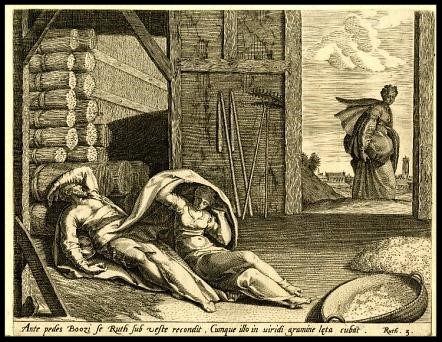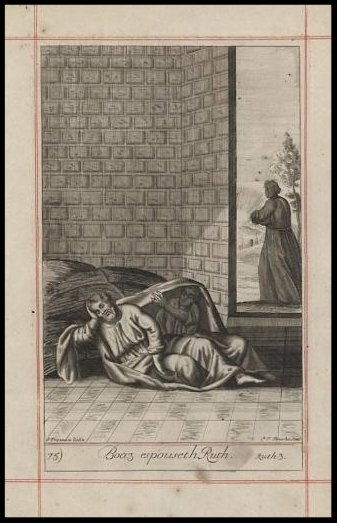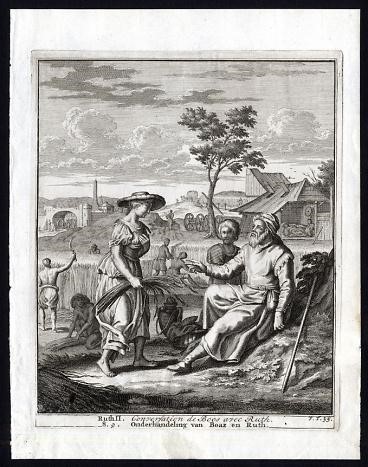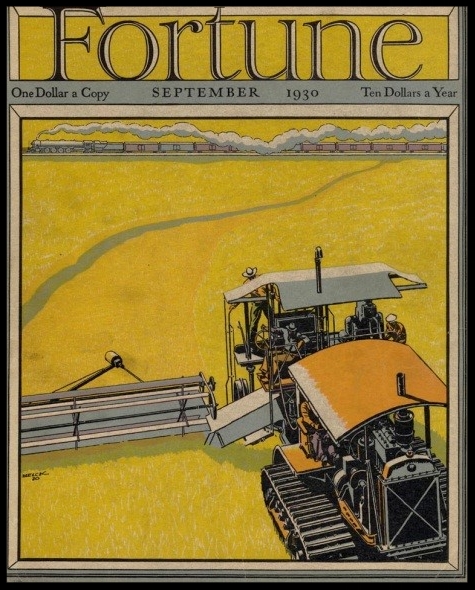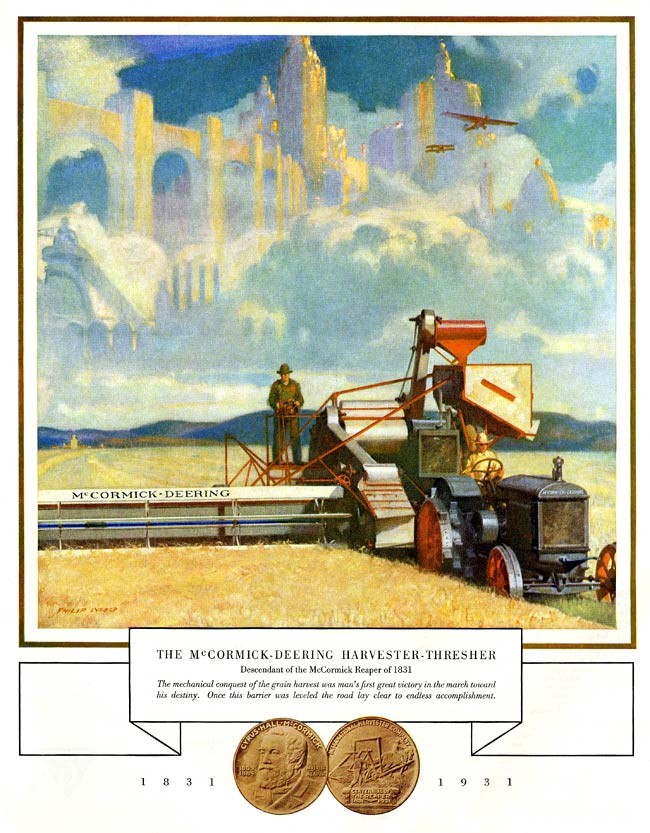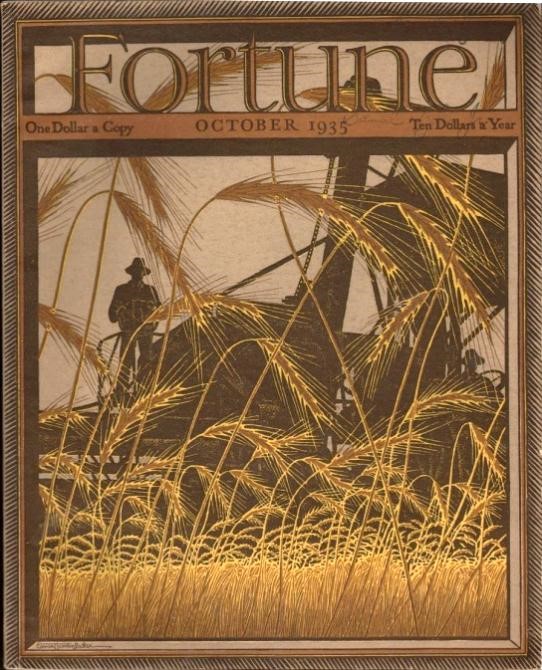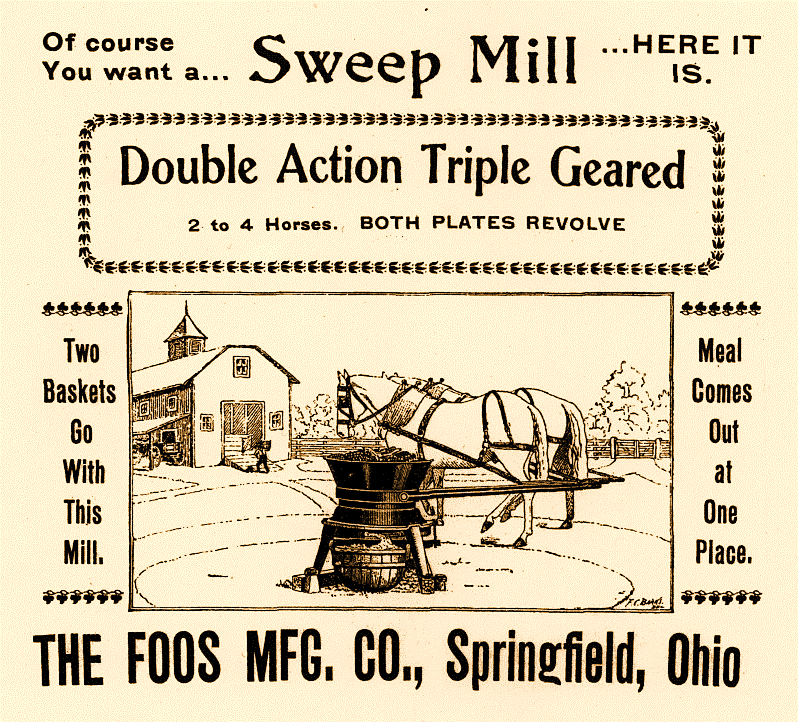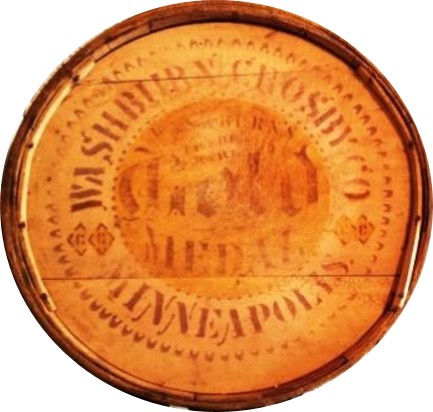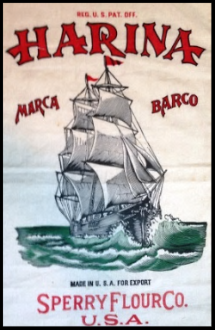Objects & Art Commemorating Agrarian Traditions & Landrace Crops
Our years of research and passion for authentic, old world farming has led to us create a unique and remarkable collection of items celebrating agricultural history. When we travel to conferences and other events, we often bring some of these rare items for others to see and enjoy. To help share with a wider audience, we thought it appropriate to share a blog post listing all the treasures we have in this collection.
The Gleaners Tapestry (Belgium, c. 1950)
I. Early Modern European Engravings—The Book of Ruth Gleaning Motifs
(A) Gerard de Jode (1585); (B) G. Freman and (1672); (C) Mattias Scheits and François Halma (1710)
(D) T. Stothard, The Seasons (London, 1794); (E) B. Foster, The Farmer’s Boy (London, 1858)
II. Franklin Knight, ed., [George] Washington’s Agricultural Correspondence: Letters… to Arthur Young and John Sinclair (1847). Morocco-bound leather with engravings and maps
III. 19th Century European Agrarian Realist Art Prints
(A) J. Breton, Harvest (1860); (B) G. Myasoyedev, Reapers (1887); (C) Van Gogh, Wheat Sheaves (1890)
IV. Early 20th Century American Periodical & McCormick Centennial (1831-1931) Color Lithographs
(A) P. Helck, Combine Harvester and Railroad (1930); (B) P. Lyford, McCormick-Deering Harvester-Thresher (1931), (C) N. C. Wyeth, The World’s First Reaper (1931), (D) E. Baker, Wheat Harvest (1935)
V. Agrarian Folk Art
(A) Painted wooden bowl in primitive Volga Khokhlama style (Henry & Anna Litzenberger, 1876); (B) G. V. Kurchatkina, “Novgorod Cathedral” & Straw Overlay Salyomki Box (Russia, 1991); (C) Fern Enos, Heart Wheat-weaving (Colfax, WA, c. 1980)
VI. Grain Mills and Baking Equipment
(A) Pine Kneading Trough & Cabinet-Work Table (Eastern Europe, c. 1900); (B) Iron Mortar & Pestle (c. 1870); (C) Hand Iron-Buhr Mill (c. 1880); (D) Iron Enterprise No. 10 Grain Mill (U. S., c. 1920); (E) Meadows Mill Kitchen Grain Mill
VI. Flour and Feed Milling Equipment
(A) Foos Horse-Powered Mill (Springfield, OH, c. 1900, from the Finley Ranch near Inchelium on the Colville Indian Reservation, WA); (B) Ensberg French Stone-Buhr Mill (c. 1890, Peterson, MN)
VII. Harvest Hand Tools, Winnowing Basket, and Fanning Mill
(A) Cradle Scythe; (B) Grain Rake; (C) Threshing Flail; (D) Scoop Shovel (c. 1875), (E) Puget Sound Salish Winnowing Basket (c. 1900); (F) Pacific Fanning Mill (Kenosha, WI, c. 1910; from a farm near Schrag, WA)
VII. Commercial Container Art
(A) Champoeg Flour Mills “Golden Sheaf” Flour Sack (c. 1890); (B) Washburn-Crosby Flour Barrel (c. 1895); (C) Hungarian Linen Grain Sack (c. 1910); (D) Sperry Flour Company “Harina” Four Sack (c. 1940)
IX. Liberty Hyde Bailey Published Works, Agrarian History, and the “New Agrarianism”
(A) L. H. Bailey, The Cyclopedia of American Agriculture, (4 Volumes, 1908); (B) L. H. Bailey, The Holy Earth (1915); (C) Liberty Hyde Bailey: Essential Agrarian & Environmental Writings (2008), What Are People For? Essays by Wendell Berry (1990)
X. Portfolios
(A) Gustavus Sohon and John Mix Stanley color lithographs, in I. I. Stevens, Narrative and Final Report of Explorations for a Route for a Pacific Railroad (Washington, D.C., 1860); (B) Eugéne Graff color lithographs, in H. Vilmorin, Les Meilleurs Blés [The Best Wheats] (Paris, 1880); (C)The Country Gentleman, Saturday Evening Post, Collier’s, and other 19th and 20th century periodical lithographs



